

|
Ethnic Cleansing Of Palestine Index | The City of Jaffa | Canada Park | Violations of International Law 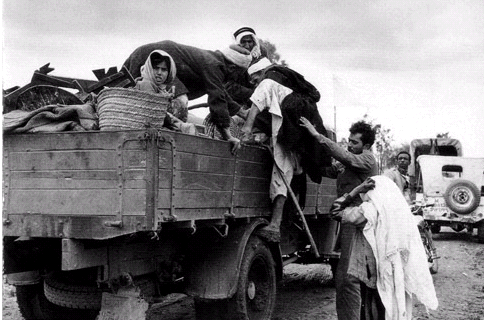 Palestinian families forced to leave the village of Faluja in 1948. The village was ethnically cleansed by Jewish forces. On its looted lands, Israeli settlers founded Qiryat Gat in 1954. 13 (UN photo) Ethnic Cleansing: NOUN: The systematic elimination of an ethnic group or groups from a region or society, as by deportation, forced emigration or genocide. 19 Apartheid: NOUN: 1. An official policy of racial segregation involving political, legal and economic discrimination. 2. A policy or practice of separating or segregating of groups. 3. The condition of being separated or segregated from others. 1 Zionism: NOUN is the international Jewish political movement that advocated for and supported the reestablishment of a homeland for the Jewish people in Palestine. The movement was a response by European Jews to Anti-Semitism in Europe. Ethnic Cleansing Begins Ethnic cleansing in Palestine began with the idea that Palestinian Arabs would never consent to giving up lands for European Jews to settle on after World War II. 2 From the outset, Israel’s first leader, David Ben-Gurion, made clear the intentions of Israel’s Zionist movement when he said in 1937: “We must expel Arabs and take their place. But one needs an opportune moment for making it happen, such as war.” 3 Once the plan was in place, Ben-Gurion admitted: “Let us not ignore the truth among ourselves…politically we are the aggressors and they defend themselves. The country is theirs because they inhabit it, whereas we want to come here and settle down, and in their view we want to take from them their country.” 3 After the 1947 war was over, Ben-Gurion declared:“The Arabs of the land of Israel have only one function left to them-to run away.” 3 This has effectively been the policy of Zionist Israel to present day. A Brief history of partition, war and consequences to Palestinians who lived in what is now called Israel
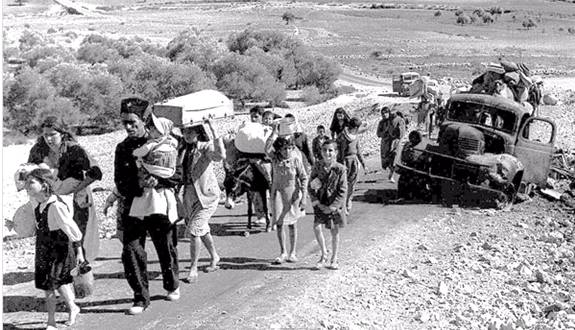 Palestinians (as they came to be called) fled to other Arab lands—principally the West Bank, Jordan, Gaza Strip, Syria and Lebanon—and, as in the pictures above, Israelis established settlements, on exactly the same spots where Arab villages had stood. 14
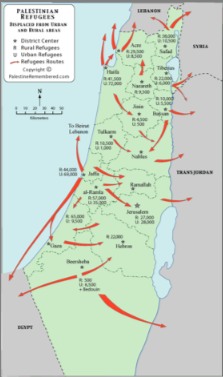
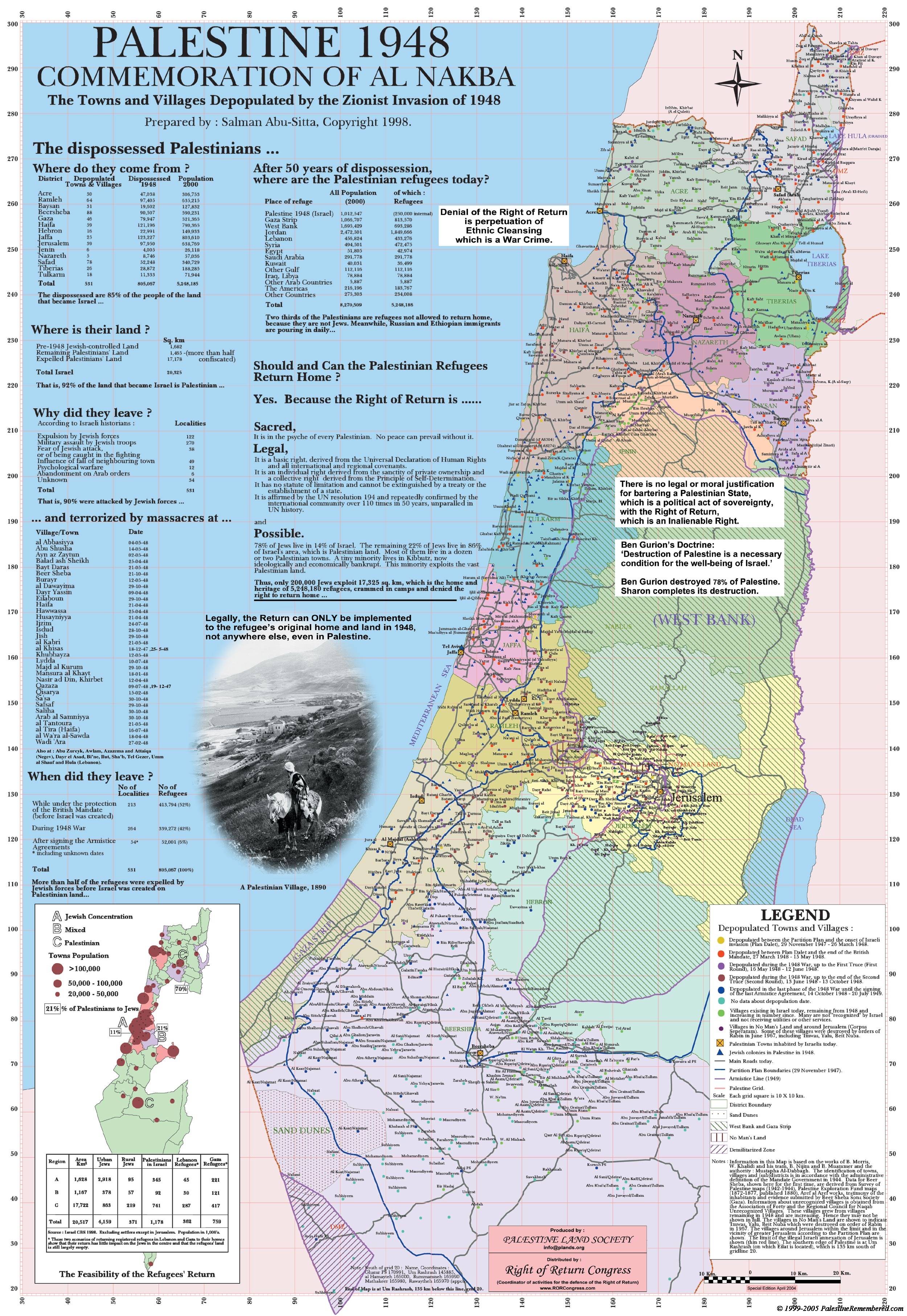 Map on the left shows graphically where refugees fled and the map on the right shows each village and when it was depopulated. Click on ether map to enlarge and examine. Examples of the Expulsion of Palestinians Golda Meir was reported to say in 1948 regarding the city of Haifa:  “It is a dreadful thing to see the dead city. I found next to the port children, women, the old, waiting for a way to leave. I entered the houses, there were houses where coffee and pitot left on the table. I could not avoid thinking that this indeed had been the picture in many Jewish towns in Europe.”3 Another example of this was the Deir Yassin Massacre. 10, 11 This was the first instance in which an Israeli incursion into Palestinian villages prompted worldwide outrage.  In fact, Albert Einstein and many other prominent Americans, most Jewish, wrote an op-ed in the New York Times decrying the murder of the villagers of Deir Yassin. To read the full transcript of Einstein's op-ed, click Here There are many conflicting reports about the Deir Yassin massacre that occurred in April of 1948, but one thing is generally agreed upon-that hundreds of Arabic villagers in Deir Yassin were promised safety during April of 1948. It was, however, decided by Israelis that the village provided a distinct vantage point over the main road traveling in to Jerusalem, and was invaded in the early morning hours. Although the village fought back, once it was realized that the Jewish factions were indeed invading their village, by most accounts, over 100 men, women and children were found dead and in need of burial when officials arrived on the scene. 10, 11, 15 Subsequent exaggerations by Israeli Government of the death toll of more than 240 people induced a panic in the Arab population of Palestine and created the first Nakba (Nakba means Catastrophe) of Palestine. 3, 15 It was later claimed by a member of the Herut Party, “Thanks to Deir Yassin, we won the War.” 3 In an ironic end to Deir Yassin, the Jewish Holocaust Museum was built upon the ruins. 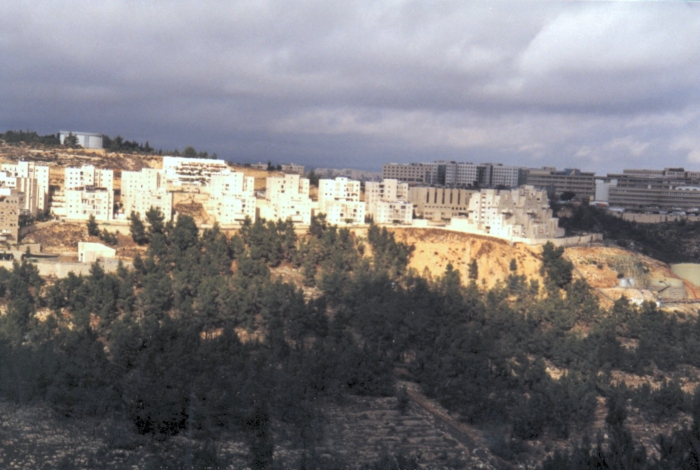
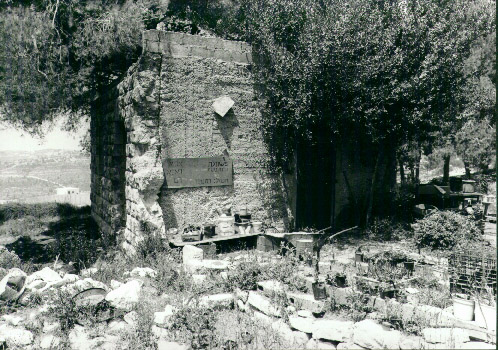 Picture on left is the view you see exiting the Jewish Holocaust Museum Yad Vashem. The museum commemorates the killing of 6 million Jews in the Holocaust. The Museum has no windows and as you exit you see several beautiful Jewish settlements. The view suggests "look what beauty we have built on the ashes of the Holocaust." In the view is the ruin of Deir Yassin pictured on the right. The irony is that the Holocaust Museum is built on the agricultural land of Deir Yassin. The Israeli government passed a number of land ordinances that proclaimed its title to so-called abandoned lands, including some where Arabs continued to live. Among several ordinances, the so-called “waste land” laws required that the Israeli Minister of Agriculture take over any uncultivated land. 12 Re-population of Palestine with Jewish Settlers Forty-seven new rural settlements were established on the sites of abandoned Arab villages by October 1949, and they absorbed 25,255 new Jewish immigrants. By the spring of 1950 over 1 million dunams had been leased by the custodian to Jewish settlements and individual farmers for the raising of grain crops. 12 The journalist Robert Fisk interviewed the Israeli Custodian of Abandoned Property in 1980 and has written (reprinted in Wikipedia): “The Custodian of Absentee Property does not choose to discuss politics. But when asked how much of the land of the state of Israel might potentially have two claimants - an Arab and a Jew holding respectively a British Mandate and an Israeli deed to the same property …[he] believes that 'about 70 percent' might fall into that category. 12, 17 Loss of Land in Palestine by Degrees
The Nakba: In 1948, after the 1947 War, approximately 700,000 Palestinian Arabs fled to outer Palestine, from Jaffa, Haifa and West Jerusalem to Gaza and the West Bank, or to other countries such as Jordan, Lebanon and Egypt in four distinct waves. 2,6,12 The Naksa: In 1967, after the Six-Day War had destroyed the villages of Imwas, Yalo, Beit Nuba, Surit, Beit Awwa, Beit Mirshum, Shuyukh, Jiftlik, Agarith and Huseirat, approximately 300,000 refugees fled to Jordan, Syria and Egypt. 2,6,12 Palestinian Refugees Current estimates put the Palestinian refugee count at 6 million people. Some of these reside in Gaza, the West Bank, Jordan, Lebanon and Syria. Since 1948, the World Community has recognized the Right of Return to Palestine under the U.N. Resolution 194. However, Israel has created its own laws concerning the Right of Return with convoluted residency laws, making it impossible to return to lands owned for hundreds of generations by indigenous Palestinians. One example is the prevention of Eastern Jerusalem residents to return to Jerusalem if out of the country for more than seven years-even if as a refugee due to deportation or land confiscation. 2,7,16,18 Ethnic Cleansing Continues Today Inside Israel, in Jerusalem and in the Occupied Territories. With walls, road blockades and residency restrictions, families are effectively cut off from one another. Gaza has been cut off entirely from any help from a neighboring country. Jaffa is yet another city that has been settled by Israelis pushing Arabs out of the community by slowly “Judaizing” the Old City and confiscating land and homes. In the West Bank, arrests are made daily and settlers are permitted by the IDF to harass Arab villagers. 2,5,6,18 For all Palestinians, harassment, racism, random shootings by the IDF, destruction of croplands, confiscation of land through deception or force, hunger, lack of medical care, lack of access to education, lack of permission to travel or have a meaningful vote, life imprisonment without charge…these are the myriad ways Israel cleanses away Arabic Identity in Palestine. 2,6,18 Sources 1. United Nations Office of the High Commissioner for Human Rights; International Convention on the Suppression and Punishment of the Crime of Apartheid 11.30.1973 and Convention Related to the Status of Refugees 12.14.1950. http://www.unhchr.ch/html/menu3/b/11.htmhttp://www.unhchr.ch/html/menu3/b/o_c_ref.htm 2. www.badil.orghttp://www.badil.org/al-majdal/1999/2a.html 3. Palestine Remembered; Yosef Weitz-A Brief Biography, David Ben-Gurion-A Brief Biography, http://palestineremembered.com/Acre/Famous-Zionist-Quotes/Story644.html http://palestineremembered.com/Acre/Famous-Zionist-Quotes/Story638.html http://www.palestineremembered.com/Acre/Palestine-Remembered/Story680.html 4. http://jfjfp.com/?page_id=597 Palestinian Citizens of Israel fact sheet. 5. The Electronic Intifada; Human Rights: Defining Israel’s Record http://electronicintifada.net/v2/article689.shtml 6. If Americans Knew.org http://ifamericansknew.org/cur-sit/hari-ec.html 7. http://www.ifamericansknew.org/history/origin.html 8. http://en.wikipedia.org/wiki/Land_and_Property_Laws_in_Israel 9. http://www.palestineremembered.com/download/VillageStatistics/4-The%20Land%20And%20Its%20Ownership/Page-019.jpg 10. http://electronicintifada.net/bytopic/171.shtml 11. http://www.deiryassin.org/ 12. http://en.wikipedia.org Naksa Day, Oslo Accords, Deir Yassin Massacre, 1948 Palestinian Exodus 1967 Palestinian Exodus, Land and Property Laws in Isreal. 13. http://electronicintifada.net/bytopic/171.shtml 14. http://electronicintifada.net/bytopic/171.shtml 15. http://www.Zionism-Israel.com http://www.zionism-israel.com/his/Hadassah_convoy_Massacre-4.htm 16. United Nations Resolution 194 (III) http://domino.un.org/UNISPAL.NSF/1ce874ab1832a53e852570bb006dfaf6/c758572b78d1cd0085256bcf0077e51a!OpenDocument 17. Robert Fisk, 'The Land of Palestine, Part Eight: The Custodian of Absentee Property', The Times, December 24, 1980, quoted in his book Pity the Nation: Lebanon at War. 18. http://www.globalpolicy.org/security/issues/israel-palestine/land/2008/1107highlight.htm 19. http://www.badil.org/Publications/Bulletins/Bulletin-18.html |
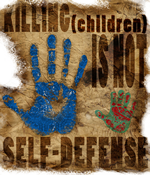 See Our Posters 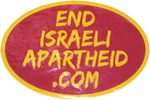 Choose one FREE Sticker   
|
